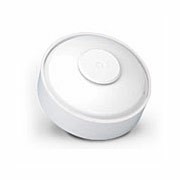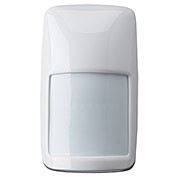Heat detectors are used to alert people that a fire may have started. Unlike smoke detectors, they do not respond to smoke; rather, they are designed with sensors that are triggered when a certain temperature is reached or when the temperature rises at a certain rate.
 The best places to use heat detectors are those areas in which it is impractical to have smoke detectors, such as kitchens. Kitchens are prone to small amounts of smoke from cooking, so having a smoke detector there would be more of a nuisance than a help. A heat detector offers protection in the kitchen, where changes in temperature may indicate the presence of fire.
The best places to use heat detectors are those areas in which it is impractical to have smoke detectors, such as kitchens. Kitchens are prone to small amounts of smoke from cooking, so having a smoke detector there would be more of a nuisance than a help. A heat detector offers protection in the kitchen, where changes in temperature may indicate the presence of fire.
Since most fires are detected more quickly by smoke detectors than with heat detectors, heat detectors are not a replacement for them; rather, they should be used as a supplement to the protection offered by smoke detectors.
Honeywell’s 5809 wireless fixed heat and rate-of-rise temperature sensor offers expanded fire detection and installation flexibility. It is ideal for hard to wire locations and applications that require more than smoke detection. With no wires to run, the 5809 is fast and easy to install.
The 5809 combines both rate-of-rise and fixed temperature sensors.
Fires typically cause a rapid rise in temperature in the surrounding area. The 5809’s rate-of-rise thermostat senses the rise in temperature and signals an alarm if the increase is 15° or more per minute.
A built-in fixed temperature sensor will also signal an alarm if the environmental temperature rises above 135°F.
Features:
- Contains a built-in transmitter which can send alarm, supervisory and battery condition messages to the system’s receiver/control unit
- Powered by a three-volt lithium battery. If the battery voltage gets too low, the 5809 sends a low battery signal to the control panel
- Features a tamper switch, which causes a trouble signal to be sent to the control if the unit is removed from the mounting base
Give us a call at 1-800–988–2378 sales@bestsecurityproducts.com



 Reasons to Choose this Sensor
Reasons to Choose this Sensor
 In 1993 Best Security Products began with the goal to provide the most current and best home security products and services and the best business security systems in the security industry today.
In 1993 Best Security Products began with the goal to provide the most current and best home security products and services and the best business security systems in the security industry today.